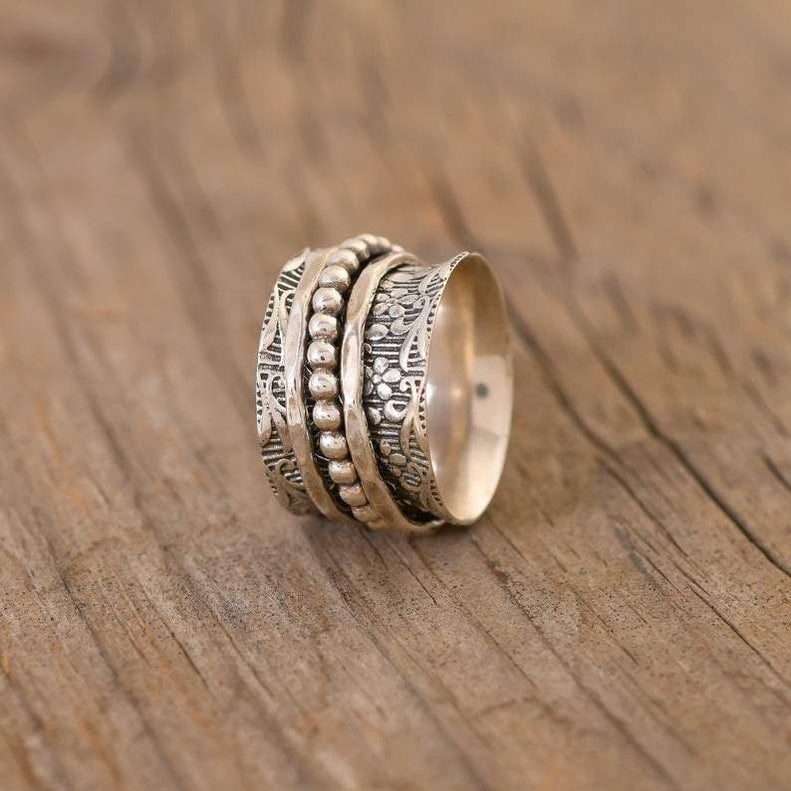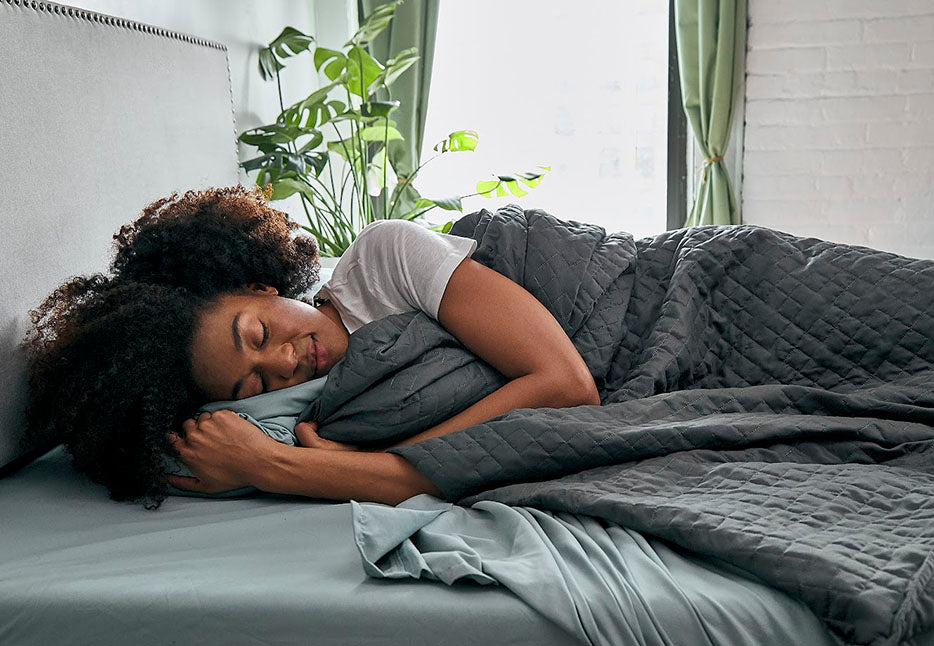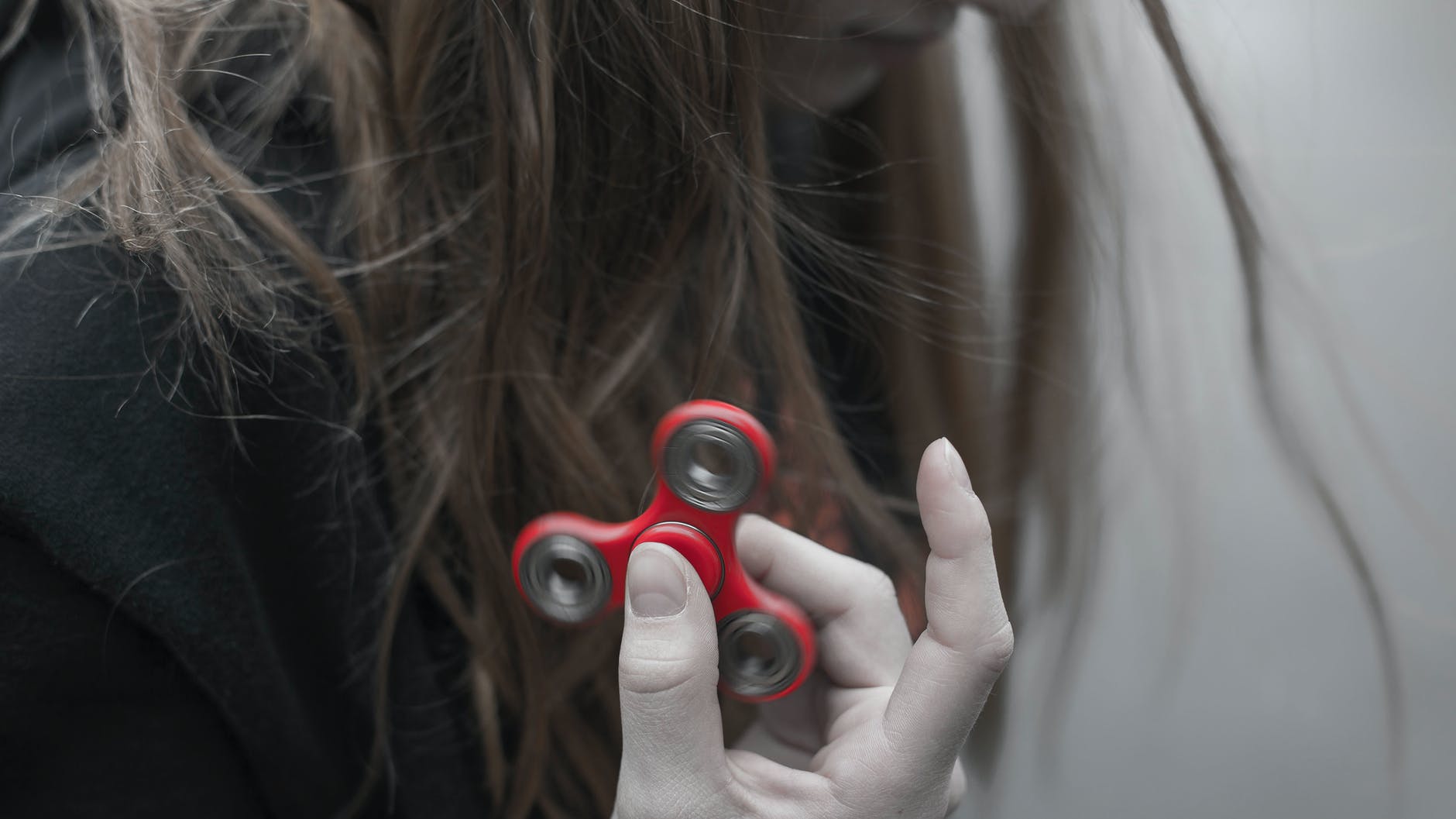What’s anxiety jewelry and does it work?

A few minutes every morning is all you need.
Stay up to date on the world's Headlines and Human Stories. It's fun, it's factual, it's fluff-free.
Anti-anxiety and stress relief products have been enjoying a boom of popularity over the past five years or so. But, while stress balls and therapy putty seem to have been around for ages, we’ve entered a new cultural zeitgeist of anxiety jewelry, fidget toys and trinkets – for children and adults alike.
Even before COVID-19, which has just led to a spike in mental health issues around the world, there were upward trends of Americans experiencing anxiety. According to findings from a 2018 poll conducted by the American Psychiatric Association (APA), this rise was observable among all age groups and demographics. The APA found anxiety rates had spiked 39% from the same poll conducted a year earlier.
Then in 2020, data from the National Survey on Drug Use and Health (NSDUH), an annual survey on substance use and mental health in the United States, found that anxiety had a rapid increase among 26-34 and 35-49-year-olds and had almost doubled among participants between the ages of 18-25 (from 7.97% of participants experiencing anxiety to 14.66%).
If anxiety and stress are increasing on this scale, a spike in demand for anti-anxiety and stress-relief products makes sense. While clinical anxiety disorders are a medical issue that can be treated with medication, counseling or other medically researched therapies following consultation with a doctor, seeking medical attention for these issues can be expensive, time-consuming and require a significant emotional investment.
For everyday anxiety and stress, many people choose to self-manage their symptoms. Self-management is when someone can manage anxiety on their own without medical supervision. Usually, self-management is most effective for milder or shorter periods of anxiety. Different techniques for self-management include regular physical exercise, relaxation and stress-management techniques, as well as relying on a support network of close friends and family.
Using tools like anti-anxiety products could be considered a form of self-management. Right now, a major trend in this field is anxiety jewelry. But does anxiety jewelry actually work? Or is anxiety jewelry a gimmick?
TMS spoke with Dr. Alex Dimitriu, a dual board-certified psychiatrist and sleep medicine specialist who founded Menlo Park Psychiatry & Sleep Medicine, to get insight into the trend and efficacy of anxiety jewelry.
What is anxiety jewelry?

Anxiety jewelry is any wearable knickknack designed to be fidgeted with while also serving as a fashion-forward accessory. Popular anxiety jewelry retailers include shops like Adarabella Designs and Impulse & Modern, which offer products like anxiety rings, fidget necklaces and anxiety bracelets.
Anti-anxiety and stress relief jewelry usually incorporates functional pieces, like rings with beads that can be moved back and forth or necklaces with pendants that can be twisted and spun whenever you’re feeling anxious.
However, some anxiety jewelry relies on a different approach, like mindful breathing necklaces designed to slow your breathing, bracelets made using anti-anxiety stones like malachite and aromatherapy diffuser bracelets. Because anxiety jewelry is portable, it can be handy for days spent out and about or particular situations that may be anxiety-inducing.
Because there are so many options as to what type and style of jewelry you can buy, from necklaces to rings and bracelets, anxiety jewelry is easy to fit into most styles and wardrobes. Its efficacy, however, is an entirely different discussion.
Why has there been such an uptick in anxiety-related products in recent years?

“People are increasingly using widgets, spinners and other items to fiddle with to either improve focus and restlessness in ADHD and possibly also to relieve anxiety and stress,” explains Dr. Dimitriu. “I have seen an increased use of such products in the past several years.”
According to the Anxiety & Depression Association of America, anxiety is currently the most common mental illness in the US, with a staggering 40 million adults suffering from its symptoms. We’re also experiencing what’s been dubbed “The Anxiety Economy.” This concept refers to an economy created by fear-driven behavior, instability and disruption. With the cultural shifts and changing trends in mental wellness, new opportunities and markets are created for the anxious consumer.
For many of these items, there is little to no scientific evidence supporting their efficacy in treating anxiety symptoms. But many consumers seem to be so desperate for stress relief that they’re willing to spend their money trying these products out.
From 2016, a few significant products within this cohort emerged with viral popularity: the fidget spinner and the weighted blanket (the first major market piece being the Gravity Blanket). In 2017, fidget spinners were the most bought item on Amazon.com. The pervasiveness of anxiety and products to quell it point toward the anxiety economy remaining a viable financial movement.
What is the psychology behind fidgeting?

Having a worry object, or something to fidget with in your hands, can help you refocus and re-center, according to psychiatrist Arpan Parikh. But how does this work, exactly?
Anxiety is often a result of feeling overwhelmed by racing thoughts and a jumble of emotions. Having a physical object to focus your attention on can provide a necessary distraction from these thoughts, giving your hands something to do rather than, say, biting your nails, picking at your facing or clenching your teeth.
Wearing a specific piece of jewelry or carrying a particular object can also be a source of comfort and a way to ground yourself – like the adult version of carrying around a stuffed animal. Different types of anxiety jewelry, though, could have varying levels of effectiveness for different people. For instance, there is no scientific evidence that wearing malachite has any health benefits or can relieve anxiety.
“Having an item to play with, whether it is a ring or spinner toy or piece of jewelry may provide a calming effect on thoughts by bringing some attention to the physical item and possibly getting people out of their heads and more into a physical activity,” points out Dr. Dimitriu. “I think many such products can both redirect restlessness, as well as lower anxiety by providing a physical focus and a return to somatic sensations.”
With some scientific backing and expert approval of the fidgeting mechanisms of products like anxiety jewelry, we can say that these may be useful in easing some anxiety symptoms. However, anxiety consumerism is not a substitute for treating acute clinical anxiety comprehensively.
While stress relief and relaxation techniques are a part of maintaining a healthy lifestyle, no single product on the market will magically cure overwhelming anxiety. So, speak with a doctor or counselor for the best guidance in managing anxiety and stress.
Have a tip or story? Get in touch with our reporters at tips@themilsource.com




Comments ()